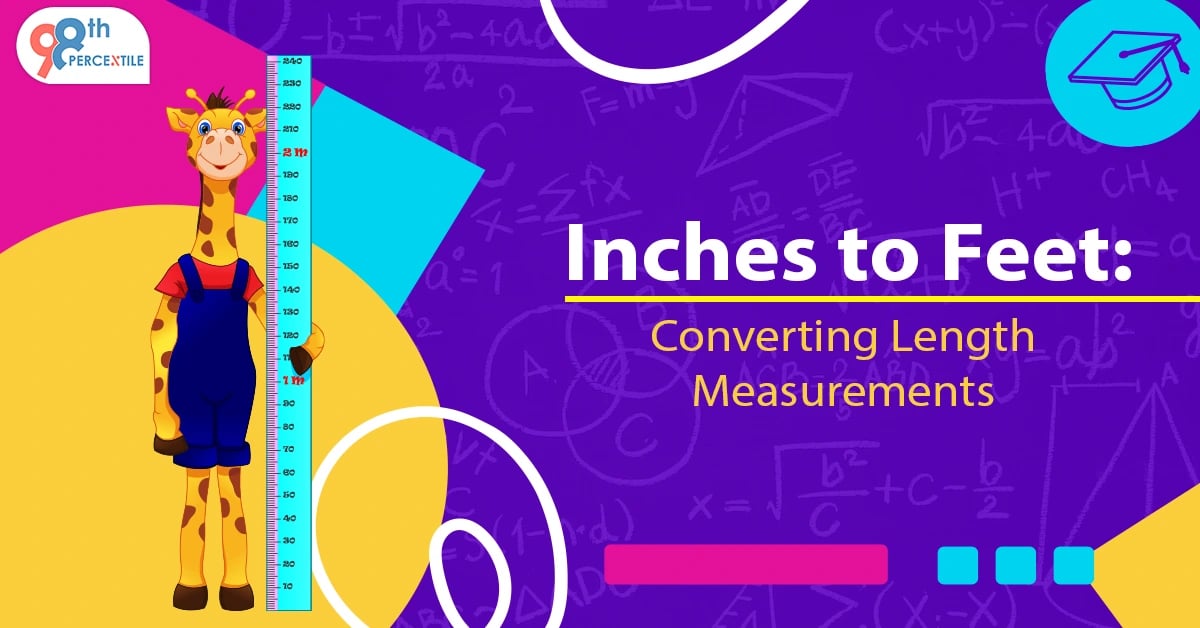Do you ever get confused about whether to measure something in inches or feet? You're not alone! Navigating the world of length measurements can be tricky, especially when conversions are involved. But fear not, fellow measurement enthusiasts! This comprehensive guide will bridge the gap between inches and feet, equipping you with the knowledge and skills to tackle any conversion challenge with confidence.
Download FREE Math Worksheets!
Understanding the Conversion Factor
Before delving into the intricacies of conversion, let's establish a fundamental concept: the conversion factor. In the context of inches to feet, the conversion factor is 12. Why 12? Well, there are 12 inches in a foot. This relationship is the key to making accurate and efficient conversions between these two units of length.
Step-by-Step Conversion Process
Let's understand the conversion process with the help of easy-to-understand steps!
- Step 1: Identify the Measurement in Inches: Begin by identifying the length measurement in inches that you want to convert. This could be the length of a room, the dimensions of a piece of furniture, or any other object measured in inches.
- Step 2: Apply the Conversion Factor: Multiply the measurement in inches by the conversion factor (12) to convert it to feet. The formula is simple:
Length in feet=Length in inches ÷ 12
For example, if you have a measurement of 36 inches, the conversion to feet would be:
Length in feet=36 ÷ 12=3 feet - Step 3: Verify Your Result: Always double-check your calculations to ensure accuracy. In the example above, confirming that 36 inches is indeed equivalent to 3 feet reinforces your understanding of the conversion process.
Unlock Your FREE Math Worksheets!
Real-World Conversions: Solved Examples
Now that you've mastered the basic conversion, let's put your newfound knowledge to work with some real-world examples!
Q.1: If You need 48 inches of ribbon to wrap a gift box. How many feet of ribbon do you need?
Solution: 48 inches ÷ 12 inches/foot = 4 feet. Therefore, you need 4 feet of ribbon.
Q.2: Emily has a ribbon that is 24 inches long. How many feet is the ribbon?
Solution: Using the conversion factor, we calculate:
Length in feet= 24 inches ÷ 12 inches/foot = 2 feet
Thus, Emily's ribbon is 2 feet long.
Q.3.: A carpenter cuts a wooden board that is 7 feet and 5 inches long. What is the total length in inches?
Solution: 7 feet × 12 inches/foot + 5 inches = 89 inches. Therefore, the total length of the board is 89 inches.
Q.4: A rectangular garden bed is 10 feet long and 6 feet wide. If you want to edge the bed with bricks that are 8 inches long, how many bricks do you need?
Solution:
1. Convert the garden bed dimensions to inches: 10 feet * 12 inches/foot = 120 inches (length) and 6 feet * 12 inches/foot = 72 inches (width).
2. Calculate the perimeter of the bed: 2 (length + width) = 2 (120 inches + 72 inches) = 384 inches.
3. Divide the perimeter by the brick length to find the number of bricks: 384 inches / 8 inches/brick = 48 bricks.
Therefore, you need 48 bricks to edge the garden bed.
Q.5: A rectangular swimming pool is 15 feet long and 8 feet wide. You want to fill it with water to a depth of 4 feet. How many gallons of water do you need, considering 1 gallon fills 0.1337 cubic feet?
Solution:
1. Convert all dimensions to feet: 4 feet * 12 inches/foot = 48 inches.
2. Calculate the pool's volume: length * width * depth = 15 feet * 8 feet * 4 feet = 480 cubic feet.
3. Convert the volume to gallons: 480 cubic feet * 1 gallon/0.1337 cubic feet = 3586 gallons.
Therefore, you need approximately 3586 gallons of water to fill the pool.
Book FREE Math Trial Classes Now!
Beyond the Basics: Tips and Tricks for Conversion Mastery
- Memorize the conversion factor: Having 12 inches equal to 1 foot ingrained in your memory will make conversions a breeze.
- Utilize conversion charts: Keep a handy conversion chart on hand for quick reference when needed.
- Embrace online tools: Numerous online calculators and conversion websites can handle complex conversions effortlessly.
- Practice makes perfect: The more you convert
Mastering Inches to Feet Conversion
By grasping the conversion factor, following the step-by-step process, and tackling real-life problems, you can confidently master the art of converting inches to feet. Whether you're renovating your home, crafting furniture, or working on a DIY project, this skill is invaluable. So, the next time you encounter measurements in inches, embrace the conversion challenge and stride confidently into the world of feet. Your newfound expertise will open doors to a more nuanced understanding of length measurements, empowering you to navigate the dimensions of your surroundings with ease.

 Students/Staff
Students/Staff Parents
Parents ElevatEd
ElevatEd



-Nov-18-2025-03-57-47-3267-AM.png?width=360&length=360&name=401x226%20(6)-Nov-18-2025-03-57-47-3267-AM.png)



-Jul-22-2025-03-16-52-8797-AM.png?width=360&length=360&name=401x226%20(6)-Jul-22-2025-03-16-52-8797-AM.png)






